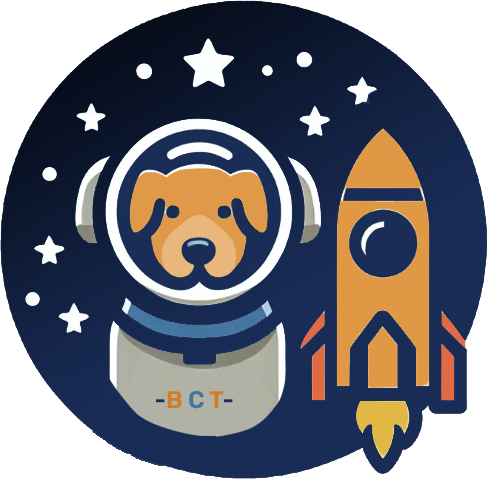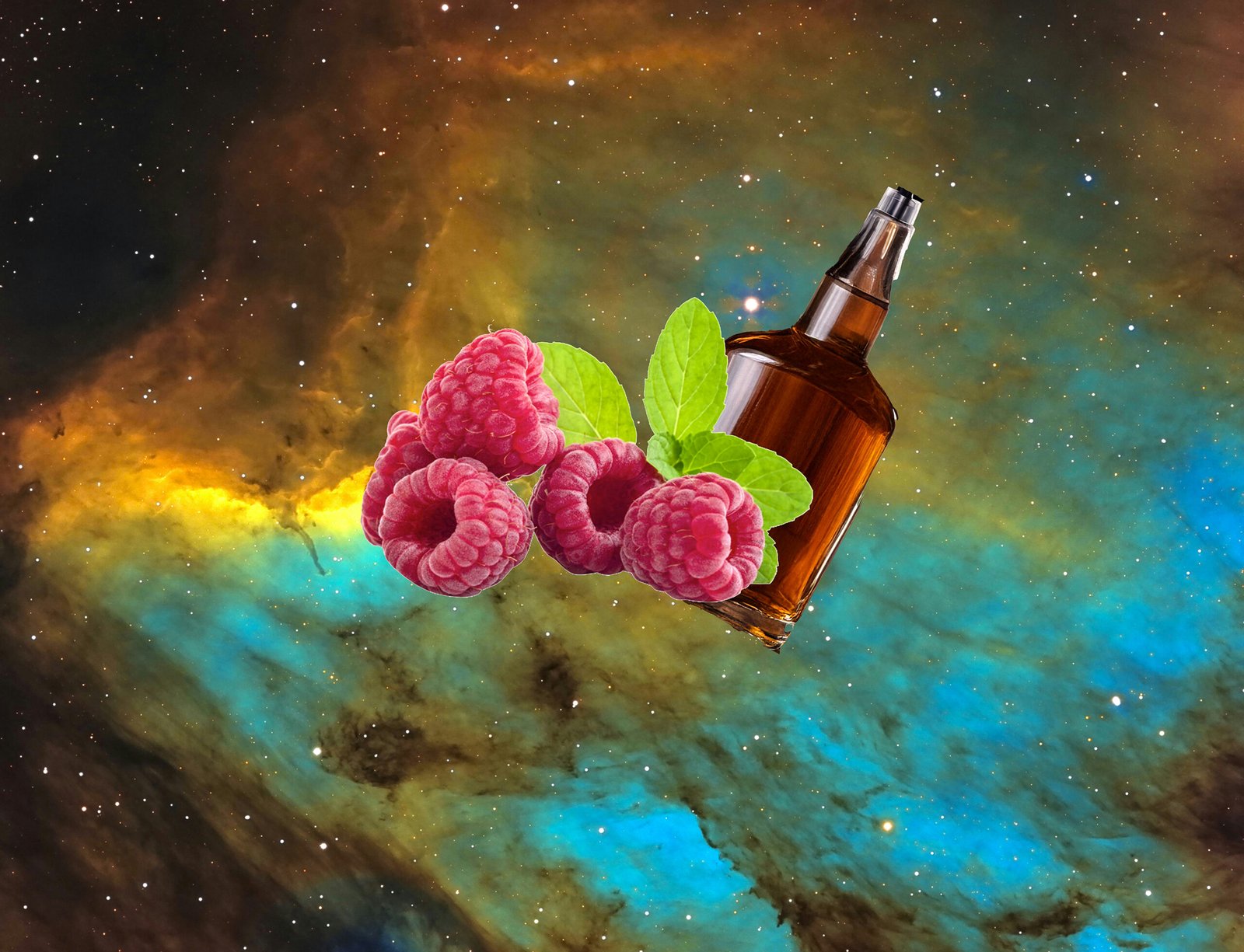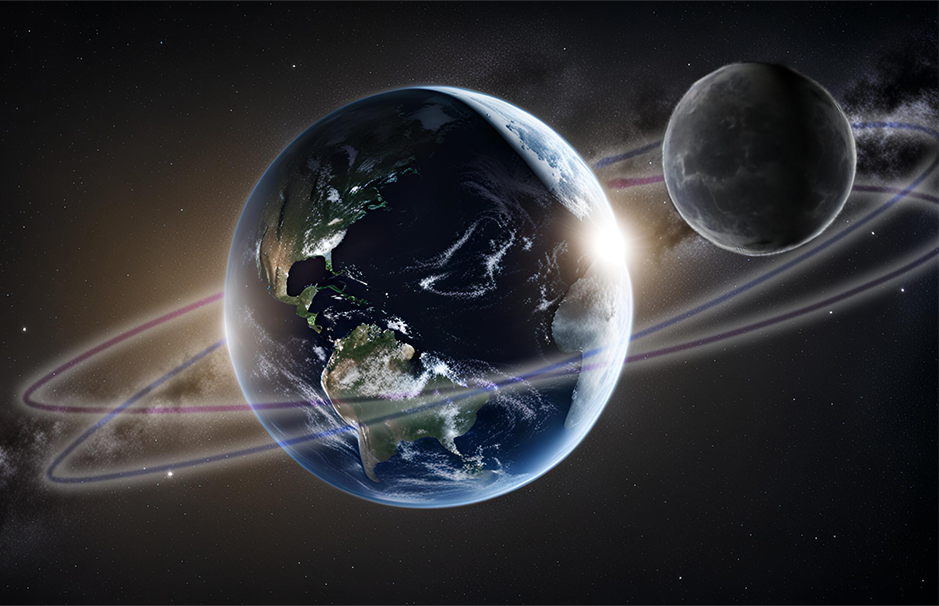
We all know how the Moon affects the Earth’s tides, but there’s much more to the relationship between the tides and the Moon than you might know. For instance, moonquakes are just as they sound- earthquakes- but on the Moon, they get even crazier! These moonquakes can last over 10 minutes, that’s a lot longer than here on Earth! Astronauts discovered them during the Apollo missions by studying the Moon’s surface. They placed seismometers down into the lunar soil during the first mission on the Moon. This article explores the mechanics of Moonquakes, how the Moon influences Earth’s tides, how Earth’s gravity impacts the Moon, and the slow but significant changes in their relationship over billions of years. Let’s look at these fascinating moonquakes and other interesting things happening with these dancing partners as they change each other, and even how this is causing the Moon to go solo and leave Earth’s orbit.
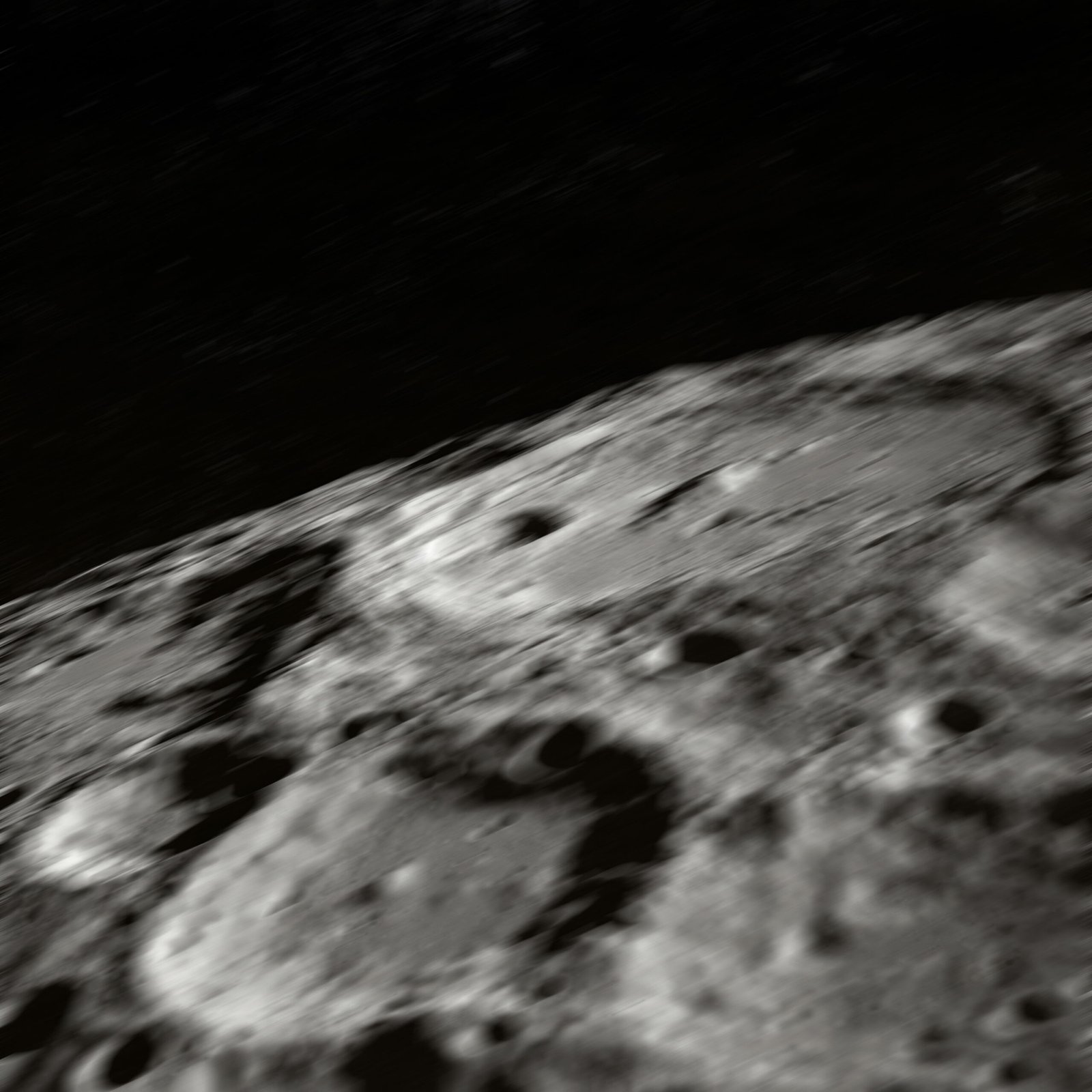
So, What Are Moonquakes?
There are four leading causes of moonquakes, each with their own name:
Deep Moonquakes: These happen very deep inside the Moon, about 500 miles below the surface. They are believed to be caused by the gravitational forces from Earth pulling on the Moon. These are usually relatively weak but happen regularly and can last over 10 minutes!
Shallow Moonquakes: These occur much closer to the surface, around 50 miles deep. They are the most powerful type of moonquake, sometimes reaching magnitudes of 5.5 on the Richter scale. Scientists aren’t entirely sure what causes them, but they think it might be related to stresses related to the moon shrinking or possibly a combination of the others.
Thermal Moonquakes: The Moon has no atmosphere, so its surface temperature changes drastically between day and night. During the lunar day, the surface heats up a lot, and during the lunar night, it gets extremely cold. This expansion and contraction of the lunar surface due to temperature changes can cause small cracks and shifts, leading to thermal moonquakes.
Impact Moonquakes: These are caused by meteoroids crashing into the Moon’s surface. The impact sends vibrations through the Moon, which are detected as moonquakes.
Man-made Moonquakes?: Recently, scientists re-analyzed data from the Apollo missions and found evidence of a possible fifth type of moonquake. This one seems to be related to the Apollo 17 lunar lander itself! It’s possible that the lander is settling or shifting slightly over time, causing these small tremors.

How Earth Is Causing Moonquakes
To understand what’s causing these moonquakes, we must examine the Moon’s role in stabilizing Earth. The Moon does more than just create tides; it plays a crucial role in stabilizing Earth’s axial tilt. Earth’s axis is tilted at an angle of approximately 23.5 degrees, and this tilt is responsible for our seasons. But without the Moon, the gravitational influences of the Sun and other planets, particularly Jupiter, could cause Earth’s tilt to fluctuate wildly. Similar to a spinning top about to lose balance and topple over, these changes would result in dramatic climate shifts, making the planet extremely dangerous for life as we know it.
The quakes on the Moon caused by Earth’s gravitational pull are known as deep moonquakes. These are the most common type of moonquake, occurring approximately 500 miles below the lunar surface. The gravitational force from Earth can cause the Moon’s interior to flex and bend slightly. This flexing generates stress within the Moon, which is periodically released as deep moonquakes. These are the deepest type of moonquakes recorded and usually last the longest. Fortunately for astronauts, moonquakes have only been measured at a maximum of 5.5 on the Richter scale, with most being lower than that. While we still do not fully understand the long-term implications of moonquakes, future missions to the Moon will allow astronauts to uncover more about this intriguing phenomenon and its significance for potential long-term habitation.
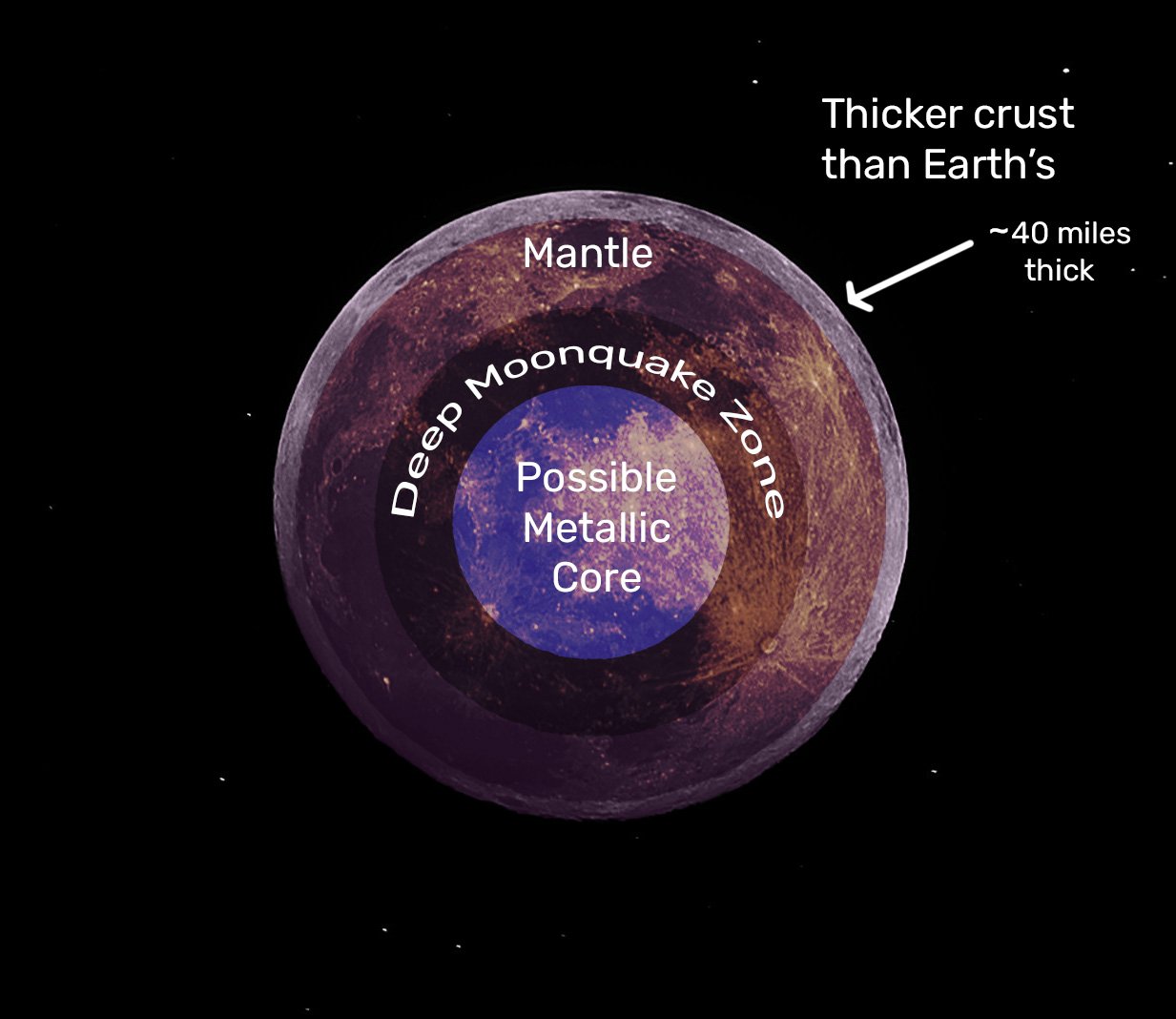
Understanding the Moon’s Interior
It was initially hypothesized that the Moon might be geologically dead as if it was just a giant rock orbiting us, but the Apollo missions proved otherwise. By deploying seismometers on the lunar surface on Apollo Missions 12, 14, 15, and 16, scientists were able to create a network of seismometers and gather detailed data on seismic activity; unfortunately, the seismometers stopped working in 1977, and we haven’t been back to gather data since then.
The Moon’s relationship with Earth began about 4.5 billion years ago, likely with a cataclysmic event. The leading theory is the Giant Impact Theory, which suggests that a Mars-sized protoplanet named Theia collided with the young Earth. The impact ejected material from Earth’s mantle into orbit, eventually consolidating to form the Moon. This is important because The Earth and the Moon have a similar composition, and lunar rocks collected during the Apollo missions have a similar isotopic composition to Earth’s mantle, suggesting a shared origin. The Earth-Moon system’s unique tilt and angular momentum are consistent with a massive collision. All this suggests that the Earth and Moon could be sisters in our solar system. They could be made up of very similar stuff, including having a similar core and, thus, similar quakes!
By analyzing the seismic waves generated by moonquakes, scientists were able to gain insights into the Moon’s interior structure: The Moon’s crust is thicker than Earth’s, with an average thickness of about 40 miles thick. Its mantle is composed of dense rocks rich in iron and magnesium. The Moon has a small core, likely composed of iron, with a radius about 200 miles thick, and It may be partially molten. So, the Moon’s interior has more in common with Earth than previously expected, but it isn’t the same. Earthquakes are caused by tectonic plates, which the Moon doesn’t have, so it’s quakes are caused by different sources.
Other Factors Influencing Moonquakes
So, these planetary partners are made up of similar stuff on the inside but NOT on the outside. The surface of the Moon is very homogeneous, unlike Earth. Pretty much everywhere you go on the Moon, you can expect the same thing, Moondust and craters. Additionally, the Moon doesn’t have an atmosphere or magnetic field. This acts like a roof on Earth that traps all our air and warmth. The Moon doesn’t have this, so Its surface temperature can vary wildly depending on which side is facing the Sun. This leads to a lot of thermal stress on the Moon; this constant expansion and contraction can cause Moonquakes.
Impact Moonquakes are perhaps the most straightforward cause of Moonquakes. Meteoroids fall into the Moon’s gravity and hit the surface with a thud. This shakes the ground and causes moonquakes. Earth doesn’t experience quakes this way again because of our nice protective roof. So, with the Moon constantly taking hundreds of meteoroid impacts, it’s sure to shake the interior a little bit.
Finally, Man-made Moonquakes. These are unconfirmed as an official cause of moonquakes, but the seismometers picked up readings from our man-made objects interacting on the surface. When we performed Lunar Landings and used our lunar modules, small seismic activity picked up because of this. When we return to the Moon in the coming years, we can confirm if this theory is accurate. This is using data from 1970’s technology as evidence, after all.
Tides & The Moon
Moving onto something more familiar, the Moon’s effects on Earth include the creation of tides. Tides are the periodic rise and fall of sea levels caused by the gravitational forces exerted by the Moon (and, to a lesser extent, the Sun) on Earth’s oceans. We know that the tides are caused by the Moon’s gravitational force on the Earth. The side nearest to Earth has its water pulled upwards towards the Moon, creating the high tide, which makes Earth into a slightly more oval-shaped sphere. When this happens, the opposite side of the Earth also becomes a high tide. This is because of the spinning of the Earth and how billions of gallons of water splash around when moving. Naturally, the areas further away from them become low tides because of these two high tides. Tides follow a predictable pattern, with most coastal areas experiencing two high tides and two low tides each day, a cycle known as a semi-diurnal tide.
The interaction between the Earth’s rotation and the Moon’s gravitational pull creates friction known as tidal braking or tidal friction. This process has significant long-term effects on both Earth and the Moon. As Earth rotates, the tidal bulge or the high tide created by the Moon is dragged slightly ahead of the Moon due to Earth’s faster spin.
The Moon Is Constantly Changing
The gravitational interaction between the Moon and the offset tidal bulge acts like a brake, gradually slowing Earth’s rotation by about 1.7 milliseconds per century. In the past, Earth’s day was much shorter, around 18 hours during the Devonian period (~400 million years ago). The same tidal interaction transfers angular momentum from Earth to the Moon, causing the Moon to move away from Earth at a rate of approximately 1.5 inches per year. We know this is the case again thanks to those Apollo missions, mirrors that were left on the Moon allow scientists to measure the Moon’s distance from Earth with millimeter precision, confirming its steady retreat. This gradual drift has significant implications for Earth-Moon dynamics. For example, as the Moon recedes, the strength of its gravitational pull decreases, leading to less pronounced tides over geologic time.
Surprisingly, the Moon is also shrinking. Since its formation, the Moon has been cooling down, just like all celestial bodies do after being created through the combination of gravity and rocks. We know that temperature has a significant effect on the size of objects; after millions of years of continuous cooling, the Moon has been getting smaller. As it shrinks, its surface cracks and breaks apart, which is a normal process for celestial bodies in space. Scientists estimate that the Moon’s total diameter has decreased by about 150 feet since its formation.

How the Moon Shapes Earth’s Future
As the Earth-Moon system continues to evolve, the Moon’s influence on Earth will have profound effects in the distant future. Eventually we’ll be rockin’ on earth 25/7! Earth will slow further as the Moon continues to drift away, causing days to lengthen. In billions of years, a single day on Earth could last more than 30 current Earth days. Over time, Earth will slow enough that it becomes tidally locked to the Moon, meaning one side of Earth will always face the Moon, just as one side of the Moon always faces Earth now.
Additionally, the changing of the tides will cause worldwide climate change, and the recession of the Moon will weaken its gravitational pull, resulting in less dramatic tides. This will affect ecosystems that rely on tidal cycles, such as coastal wetlands. As the Moon moves farther away, its apparent size in the sky will shrink in a few million years. This means total solar eclipses will eventually cease, leaving only partial eclipses. Fortunately, even if we lose those cool lunar eclipses, the Moon won’t keep floating away forever. When the aforementioned tidal locking happens, the Moon’s retreat will cease and stay in Earth’s orbit. It’s as if we’re only at the beginning of the Universe, and the Earth and Moon still haven’t found their place in each other’s orbit.
The Moon’s Cultural and Scientific Importance
Over the past 50 years, groundbreaking scientific missions have significantly enhanced our understanding of the Moon and its vital role in our solar system. The Moon is not just a distant, barren rock; it plays a critical role in Earth’s climate, ecosystem, and the foundation of life itself. Historically, its phases served as a natural calendar for early civilizations, helping them to mark time and guide agricultural activities. Furthermore, the Moon’s gravitational influence has a direct impact on the tides, which in turn shapes coastal ecosystems and has been crucial for the development of human settlements along shorelines.
From a scientific perspective, the Moon acts as a natural laboratory for studying planetary formation and evolution. It provides insights into the history of our own planet as well as others in the solar system. Notably, the interplay of gravitational forces between the Earth and the Moon causes phenomena such as tides and moonquakes. The Moon’s gradual drift away from Earth adds yet another layer to this intricate relationship, highlighting the dynamic nature of celestial mechanics.
As we stand on the brink of a new era in space exploration, humanity is preparing to return to the Moon through NASA’s ambitious Artemis program. This new chapter promises to unveil further secrets about our closest celestial neighbor, potentially revealing insights that could deepen our understanding of the Moon’s profound influence on our planet and its ongoing evolution. The excitement surrounding these explorations is building as we look forward to discovering more about our interconnected existence within the cosmos.
Sources:
https://science.nasa.gov/moon/moonquakes
